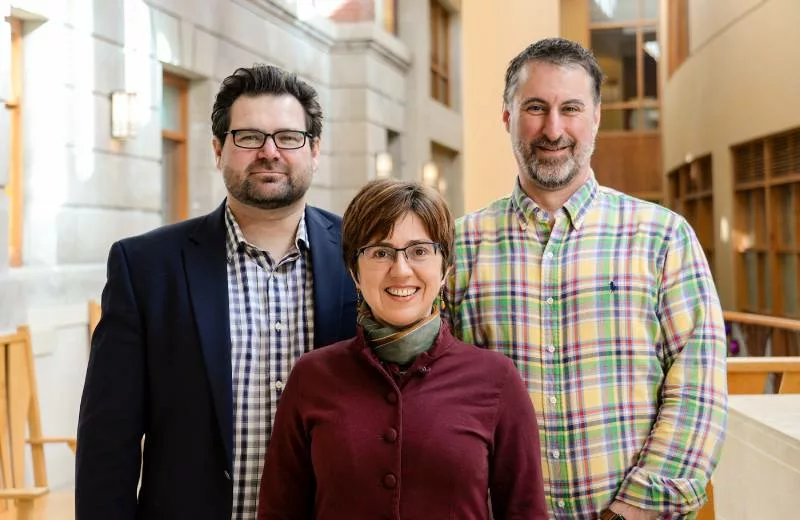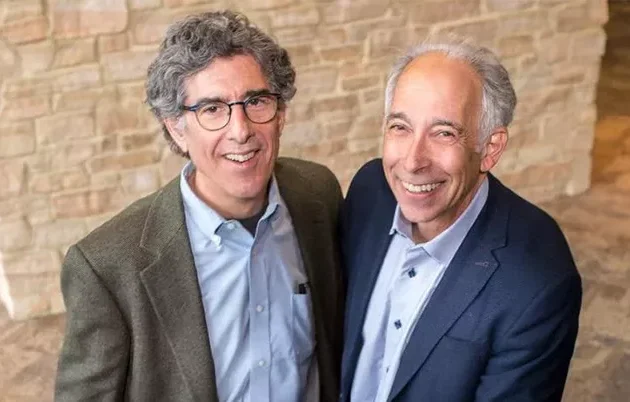Participants learn how to implement up-to-date, evidence-based guidelines for opioid prescribing for acute pain; identify and encourage the spread of opioid-related emergency health system innovations; and take part in clinical specialty collaboratives to develop methods for providing feedback to providers on opioid prescribing.
Similarly, the Department of Family Medicine and Community Health offers a free monthly video-conference series called ACCEPT (Addiction and Co-morbid Conditions: Enhancing Prevention and Therapeutics) to connect addiction medicine experts with providers statewide. Led by Brown and funded by the Wisconsin DHS, the series follows the Wisconsin Project ECHO model.
Originally developed by the University of New Mexico Health Sciences Department, the ECHO model helps experts effectively share knowledge at the community level. In the Wisconsin program, each session includes a collaborative, multidisciplinary case discussion and didactic presentation.
As of January 2019, clinicians in 38 locations statewide have participated in the family medicine department’s Project ECHO videoconferences, which provide continuing education credits to physicians, nurses, pharmacists and pharmacy technicians who attend the live session.
“Through these conferences, we train providers, especially those in high-need, underserved areas, on evidence-based practices for opioid treatment and recovery. This improves individual patient outcomes and increases communities’ capacity to support prevention and treatment strategies for opioid-use disorders,” states Brown.
Connections With Public Health
Participation in community health engagement projects deepens medical students’ understanding of local and regional issues that affect health care, health disparities and awareness of how community organizations work with the School of Medicine and Public Health to address health priorities.
For instance, as part of the ForWard Curriculum, medical students can participate in a 12-week project through Wisconsin Voices for Recovery — a statewide network funded by Wisconsin DHS with support from the Department of Family Medicine and Community Health — that offers education, connections to community resources and an advocacy platform focused on reducing stigma and promoting recovery.
A volunteer-run partner organization, Stop Heroin Now, provides funding for people who otherwise can’t access coaching on recovery and sober living.
At a July 2018 Stop Heroin Now fundraising event — Drop the Needle — in Milwaukee, third-year medical student Bryce Tyler de Venecia conducted video interviews through which he heard stories that drove home the importance of destigmatizing addiction. He met people who had driven for hours to receive addiction treatment and those who had fought for years to get children back after overcoming addiction, and he learned about resources that helped them the most.
“Many people end up in the emergency department secondary to diseases of addiction,” he notes. “As someone who wants to go into emergency medicine, it was great to see what these organizations do for policy and community outreach — all the tiers that it takes to enact public change.”
Membership in Wisconsin Voices for Recovery is free and open to anyone interested in improving recovery support services in Wisconsin, says Aleksandra Zgierska, MD, PhD (PG ’05, ’08), a Department of Family Medicine and Community Health associate professor and the network’s principal investigator (PI).
Its ED2Recovery Program awards seed funding to organizations involved with recovery so they can provide sustainable, peer-to-peer services for individuals with opioid-use disorder who are referred by emergency departments and other health care entities.
Innovative Research and Implementation
School of Medicine and Public Health faculty members, some of whom also provide addiction-related clinical care, focus on research into prevention, treatment innovations and system-level improvements that can help ease addiction’s impact on individuals, families and communities.
For instance, Zgierska is the principal investigator of a U.S. Department of Justice-funded Madison Addiction Recovery Initiative. This city-wide program, conducted with the City of Madison Police Department, aims to divert individuals who committed a non-violent, minor drug-related crime from criminal justice to treatment.
Zgierska also is the principal investigator on a five-year, multi-site clinical trial supported by the Patient-Centered Outcomes Research Institute to compare the effectiveness of mindfulness meditation with cognitive behavioral therapy in patients who have opioid-treated chronic low back pain.
Although this type of pain is often treated with long-term opioid therapy, it does not work well for many patients and can cause serious side effects, including addiction and the risk of overdose. Many clinicians, patients and their families are interested in complementary and integrative treatments.
“Mindfulness meditation trains the mind to bring nonjudgmental and accepting attention to present-moment experiences, such as pain,” explains Zgierska. “We hypothesize that training in mindfulness meditation will lead to a reduction in pain intensity and to improved function, and will result in better quality of life and help patients decrease opioid use.”
For the trial, patients at UW Health, Brigham and Women’s Hospital/Harvard Medical School and the University of Utah are randomly assigned to one of two eight-week treatment groups, either mindfulness meditation or cognitive behavioral therapy.
Outcomes are being compared over 12-month periods, and investigators interview participants to gather information about the interventions’ effects on pain, function, quality of life and opioid use.
In another study, Zgierska, Brown and Andrew Quanbeck, PhD, an assistant professor in the Department of Family Medicine and Community Health, are collaborating on a National Institutes of Health-funded project aimed at better integrating opioid prescribing guidelines into 38 Wisconsin primary care clinics. This project is building on a pilot study, which determined that distilling clinical guidelines into an implementation guide, along with six months of coaching for clinical teams at four family medicine clinics, resulted in an 11 percent reduction in opioid doses in those clinics.
“Clinical guidelines are often difficult for practitioners to interpret and hard to implement. This is meant to be a model that could be used nationwide,” says Quanbeck.
Further, Brown is the principal investigator for Screening in Trauma for Opioid Misuse Prevention (STOMP), a Wisconsin Partnership Program-funded study to assess the needs of victims of traumatic injury, who often are prescribed opioids for pain. The research team developed a screening tool to predict risk for opioid misuse and related complications after traumatic injury.
As they pilot the tool at University Hospital in Madison and four Wisconsin trauma centers, they are studying the number of procedures the patient had, the severity of pain upon discharge, the patient’s social support network and post-discharge opioid-use patterns, among other factors.
Brown concludes, “Ultimately, if we can learn how to identify and support people at risk for opioid misuse, we can reduce the risk of addiction, overdose and death and be one step closer to solving Wisconsin’s opioid crisis.”



